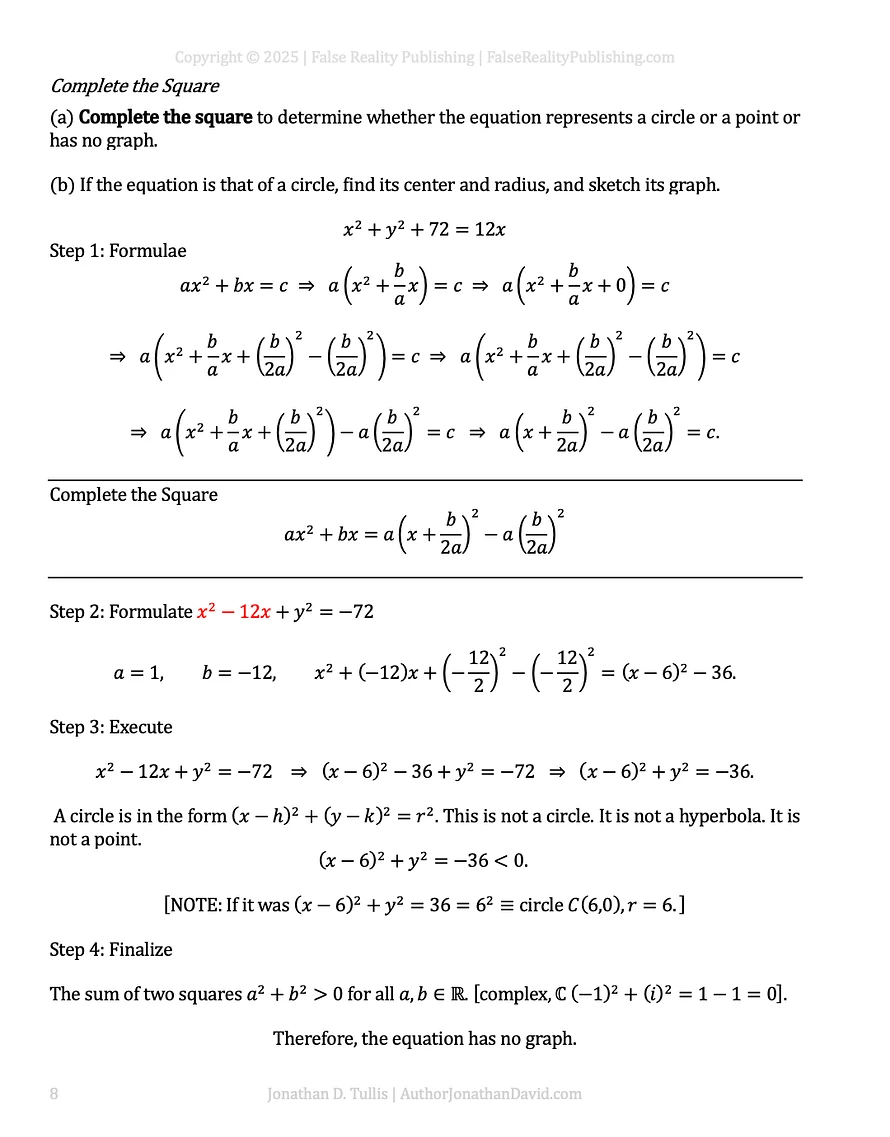Complete the Square to Determine if an Equation Graphs a Circle or Not
This post walks you through how to complete the square to determine whether an equation represents a circle, a point, or has no graph at all. It’s a classic college algebra problem and a frequent exam topic when discussing conic sections.
The Problem:
Given the equation:
x² + y² + 72 = 12x
Determine the type of graph (if any), and if it’s a circle, identify its center and radius.
Step-by-Step Breakdown:
Step 1: Rearrange the Equation
Rewrite as:
x² – 12x + y² = –72
Step 2: Complete the Square
Take the x terms: x² – 12x
Complete the square:
x² – 12x → (x – 6)² – 36
So the equation becomes:
(x – 6)² + y² = –36
Step 3: Analyze the Form
A circle is in the form:
(x – h)² + (y – k)² = r²
But here, the right side is –36, which is negative. That means the "radius squared" is negative—impossible for a real-valued radius.
Conclusion:
Because (x – 6)² + y² = –36 < 0, the equation has no graph in the real number system. It doesn’t represent a circle, a point, or a hyperbola—it has no real solution.
This lesson comes directly from the Ultimate Crash Course for STEM Majors, which covers every form of graphable equations and when each fails or succeeds in the real plane.
Get the complete PDF with lifetime access:
https://author-jonathan-david-shop.fourthwall.com/products/the-ultimate-crash-course-includes-bonus-ultimate-cheat-sheet-800-pages-of-goodness
Browse all books and crash course guides:
https://author-jonathan-david-shop.fourthwall.com
Search tags: complete the square circle test, does this graph a circle, conic sections college algebra, when is r² negative, equation of a circle no graph, complete the square step by step, how to tell if circle equation is valid, imaginary circle solution.

